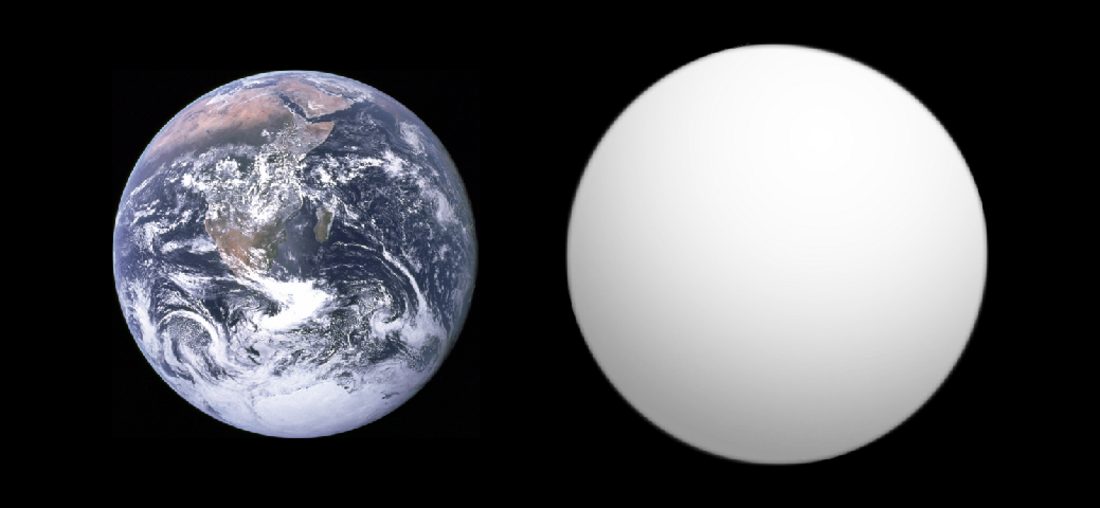Top Qs
Timeline
Chat
Perspective
GJ 1132 b
Terrestrial exoplanet orbiting GJ 1132 From Wikipedia, the free encyclopedia
Remove ads
GJ 1132 b (also known as Gliese 1132 b) is an exoplanet orbiting GJ 1132, a red dwarf star 41 light-years (13 parsecs) from Earth,[1] in the constellation Vela. The planet is considered uninhabitable but was thought to be cool enough to possess an atmosphere.[2] GJ 1132 b was discovered by the MEarth-South array in Chile.[8]
It had been called "one of the most important planets ever discovered beyond the Solar System": Due to its relative proximity to Earth, telescopes should have been able to determine the composition of its atmosphere, the speed of its winds and the color of its sunsets,[9][10][11] if an atmosphere was present. This is due in part to the small diameter of its parent star (20% that of the Sun), which increases the effect on the star's light of its transits. The planet's diameter is about 13% larger than that of the Earth[1] and its mass is estimated at 1.6 times that of Earth,[2] implying that it has an Earth-like rocky composition.[12] GJ 1132 b orbits its star every 1.6 days at a distance of 2.24 million kilometres (1.4 million miles).[8]
The planet receives 19 times more stellar radiation than Earth.[1] The equilibrium temperature is estimated at 529 K (256 °C; 493 °F) for an Earth-like albedo, or 409 K (136 °C; 277 °F) for a Venus-like albedo. The planet is likely to be hotter than Venus, as higher temperatures likely prevail at the surface if the planet has an atmosphere.[12]
Remove ads
Atmosphere
Summarize
Perspective
GJ 1132b has been subject to multiple claims about the detection of an atmosphere. In April 2017, a hydrogen-dominated atmosphere was claimed to have been detected around GJ 1132 b.[13][6] However, subsequent, more precise work ruled out the claim.[14] Instead, in 2021 detection of a hazy hydrogen atmosphere without helium but with the admixture methane and hydrogen cyanide (implying substantial underlying free nitrogen in the mix, at around 8.9% of the atmosphere) was claimed.[15] Nevertheless, two subsequent studies found no evidence for molecular absorption in the HST WFC3 Spectrum of GJ 1132 b. Instead, the spectrum was found to be flat and featureless.[16][17]
A secondary eclipse observed by the James Webb Space Telescope and published in 2024 revealed a substellar temperature of 709±31 K (436 °C; 817 °F). This is only slightly below the maximum possible dayside temperature of 746+11
−14 K (473 °C; 883 °F), assuming a zero albedo planet with no heat redistribution. The thermal emission spectra rules out pure-carbon dioxide atmospheres above 0.006 bar and pure-water vapor atmospheres above 0.16 bar.[4] Therefore, GJ 1132b likely has little to no atmosphere, consistent with the idea of the "Cosmic Shoreline"[4] and similar to other hot rocky M-dwarf planets including LHS 3844 b (Kua'kua),[18] GJ 1252 b, TRAPPIST-1b[19] and c,[20] GJ 367b (Tahay), and GJ 486b (Su).[21]
Remove ads
See also
- Habitability of red dwarf systems
- HD 219134 b, another rocky exoplanet with possible atmosphere
References
Wikiwand - on
Seamless Wikipedia browsing. On steroids.
Remove ads

